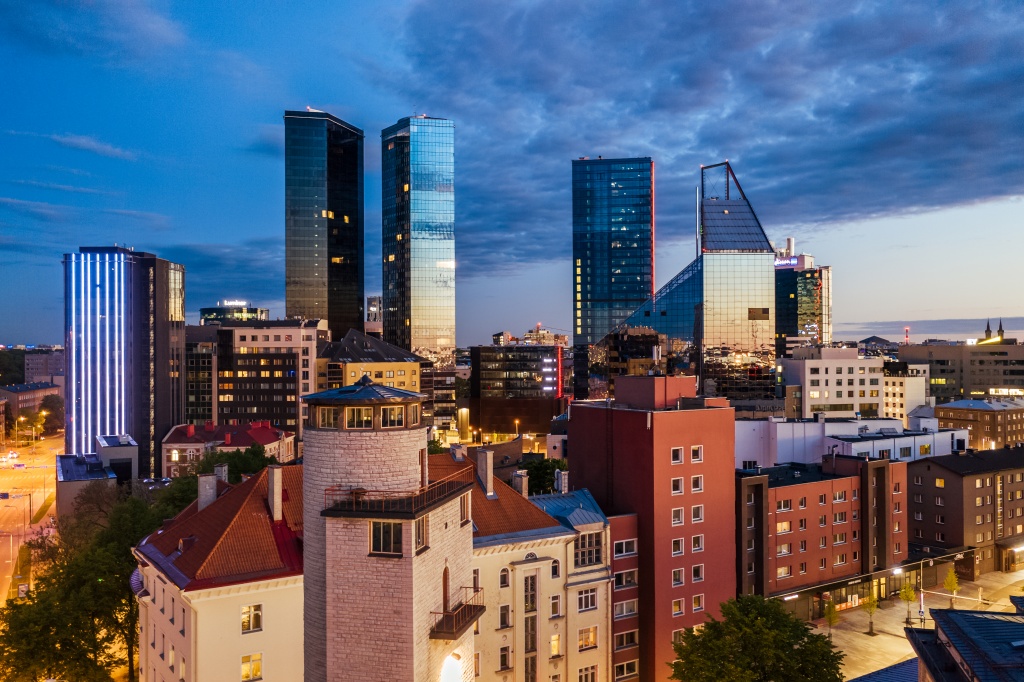Tallinn urban planning to focus on the City Centre and urban space strategy next year
In the field of urban planning in Tallinn, the focus for the coming year will be on the strategic plan for urban space and the preparation of a general plan for the City Centre as well as maintaining historical buildings in the historic downtown.
“Tallinn’s enduring ambition to create a high quality human-centred urban space is supported by the city’s proposed 2022 budget currently under discussion in the City Council. It is excellent that Tallinn now has a longer-term development plan, the Tallinn 2035 strategy. However, we need to support the implementation of the development plan by giving it a more concrete spatial dimension and more operational scope,” said Deputy Mayor Madle Lippus. “The comprehensive strategic view will help to shift attention from merely reacting and dealing with details to making in-depth and meaningful spatial decisions. For the overall vision to become a reality, we need to create operational instructions for city departments, guide people to understand the big picture of spatial planning and to consider the different layers of the city, such as the education network and the public transport across the capital region. In addition, it is important to deliberate the opening up of the lakes in Tallinn and the possible needs for reserving urban space in the long term.”
In 2022, the Space Creation Centre of Excellence of the Tallinn Strategic Management Office will continue to work on the draft general plan for the City Centre, with open discussions planned for 2023. The draft general plan will set out very important directions for the urban space development, including the location of symbolic buildings, the possibilities and conditions for designing high-rise buildings, and the expansion of the network of cycle paths and tramways in the city centre.
It will also guide the creation of car-free development areas, the development of the bastion belt around Tallinn’s Old Town and the seafront, and, more broadly, the whole of the city centre’s blue-green network – a coherent system of parks, gardens and water bodies that provide fresh air, sequester carbon and improve the well-being of people and other living beings.
The Space Creation Centre of Excellence of the Tallinn Strategic Management Office will be funded in the 2022 budget to commission analyses, studies and peer reviews, organise competitions for ideas, as well as broad-based cooperation with universities, professional organisations and other interested parties.
Lippus said that it is equally important to ensure that spatial visions and general plans are implemented in physical space within a reasonable timeframe. “The important implementer of the visions and general plans is the Tallinn Urban Planning Department as they handle detailed plans and building projects. We want to improve the service of processing detailed plans and other services provided to the city’s residents,” explained Lippus. “The Department can implement the climate objectives of Tallinn as the European Green Capital in 2023, for example by setting greening percentages for detailed plans, and monitor the creation of a friendly human-dimensioned urban space in terms of spatial integrity, density and coherence of planning areas. These activities may not require significant budgetary resources, but a reorganization and rethinking of work processes but are as important work as the implementation of major individual projects.”
An objective for the Urban Planning Department by 2022 is to add a focus on detailed planning of central areas, both in terms of enhancing the spatial quality of their content and ensuring a smoother process.
The city will continue work on the preservation of Tallinn’s cultural heritage, ensuring the maintenance of cultural monuments and buildings in areas of heritage value, and enhancing the value of the historic urban space and living environment. To this end, €300 000 in restoration grants will be allocated to ensure the maintenance and conservation of cultural monuments and buildings of heritage value. The restoration grants are intended to support owners in restoring cultural monuments, buildings in the Old Town heritage protection area, buildings in areas of environmental value and valuable buildings designated by planning. The city will also support the conservation, restoration and renovation of buildings.
Investments will continue in the Toompea retaining wall, the city wall, the Pirita monastery, the Skoone bastion and the renovation and restoration of the roof of the Catherine Church of the Dominican monastery in the Old Town, for a total amount of €1.26 million. The main detailed plans commissioned by the city are the detailed plan for Pikaliiva 69 and the surrounding area and the detailed plan for Pae 1 and the surrounding area.

